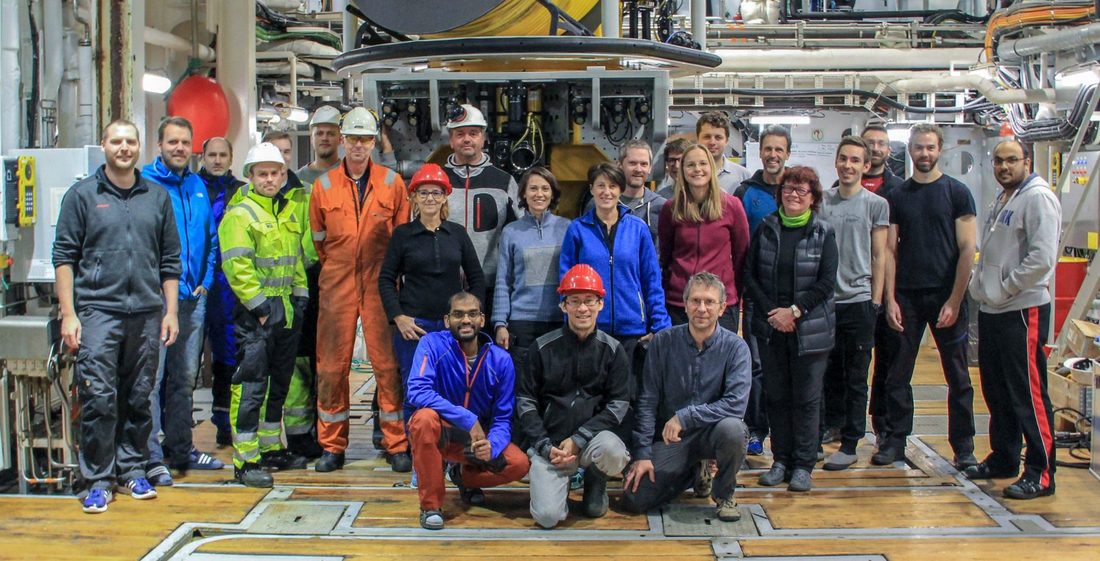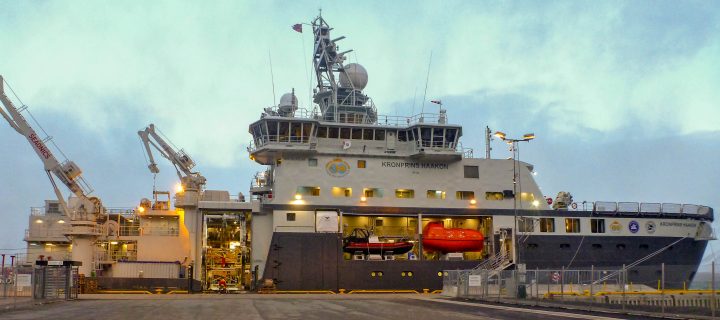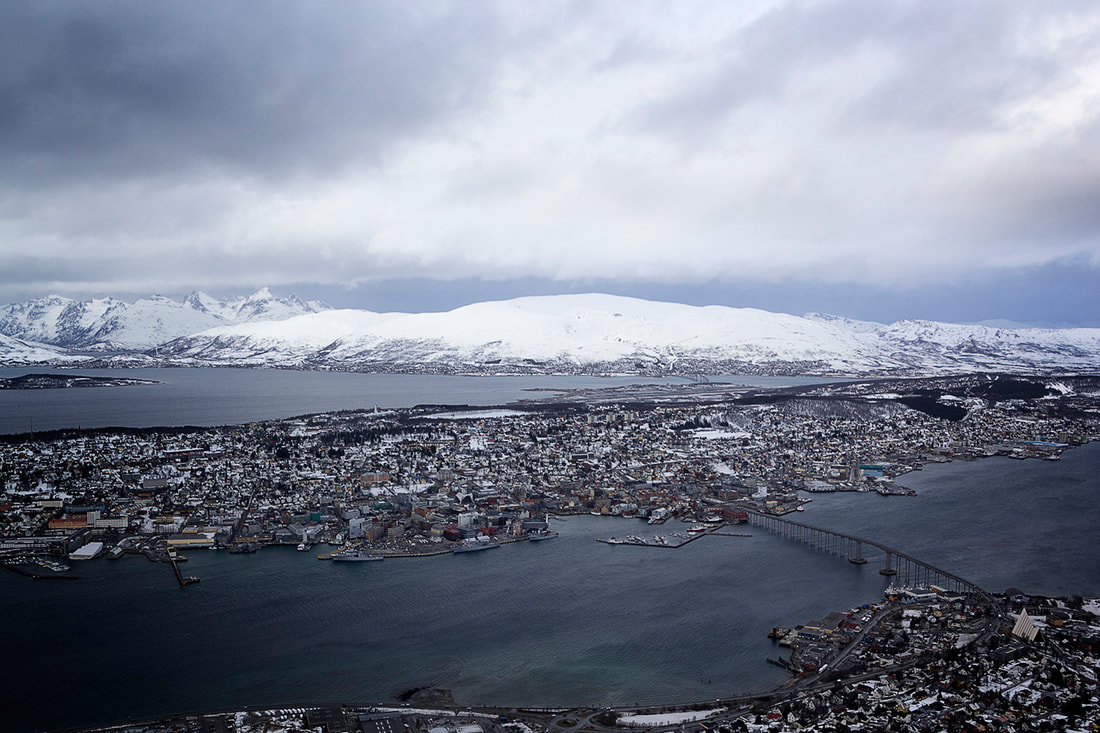|
The polar waters are cold and often rough, but the biology and geology of this region is fascinating. The ice-going research vessel, Kronprins Haakon (KPH), packed with sampling equipment and custom laboratories, is going to open up subsea research in the high north. Researchers from Centre for Arctic Gas Hydrate, Environment, and Climate UiT (CAGE) set sail in the new vessel in October 2018 with two aims: to see what the ship could to, and to transport new, high-tech equipment to an area featuring active methane release systems in the northern Barents Sea. The wind and the waves One of the biggest challenges faced by earlier expeditions was that they could be thrown off course by wind and waves, making it hard to collect samples in specific areas or examine certain structures and organisms more closely. Kronprins Haakon has a dynamic positioning system, allowing it to maintain itself in position and collect samples Another challenge is crew seasickness in rough waters – this not only is very unpleasant, it means that researchers either lose time because of illness, or because the ship has to relocate to calmer waters. Kronprins Haakon has balancing tanks built into the structure of the ship, so that it can handle waves of 4 to 5 meters. This will increase the number of sailings that can be carried out in the autumn and winter months. Inclement weather also means that it's hard to lower equipment over the edge of the ship without damaging the instrument or injuring the researchers. The 'moon pool' allows equipment to be lowered through a hole in the bottom of the ship to the seabed below Looking more closely In this voyage, Kronprins Haakon carried a remotely operated vehicle (ROV) named ÆGIR 6000, from the Norwegian Marine Robotics Laboratory at the University of Bergen. ÆGIR 6000 is an uncrewed submersible tethered to the ship through the moon pool by a long cable, and remotely operated from the ship. The ROV explores the bottom of the ocean, carried seven cameras, and can take samples using pincers, a coring device, a gas sampler and a water sampler. ÆGIR 6000 can also map the seabed at a resolution of 5 to 10 centimeters. The next step Kronprins Haakon is owned by the Norwegian Polar Institute, and run and maintained by the Institute of Marine Research. In December 2018 it is heading to Antarctica in a voyage led by the Norwegian Polar Institute and the Institute of Marine Research, and will return in May 2019. After this, it has two cruises with CAGE participation scheduled for September 2019 and October 2019. Head to New research vessel Kronprins Haakon is changing what we know about polar waters to learn more.
0 Comments
The marine environment is a place of amazing diversity. The ocean covers more than 70% of the earth's surface, creating a three-dimensional world populated by microscopic plants, algae, invertebrates and fungi through to fish, birds and mammals.
The habitats, from near shore to deep sea and trenches, and from tropical to polar, are largely untapped resources for biotechnology. Despite many decades of research in the marine environments, there are still opportunities for applications across all the different shades of biotechnology. BIOPROSP, held every two years, has a focus on the exploitation of biotechnology in marine environments. BIOPROSP_19, held in Tromsø, the capital of the Arctic world, will focus on:
BIOPROSP_19 will take place between 25 and 27 February 2019, at UiT The Arctic University of Norway. Over the past 14 years has grown beyond marine bioprospecting to cover the breadth of marine biodiscovery and biotechnology, and the application of marine bioactive molecules. |
Archives
July 2024
Categories |






 RSS Feed
RSS Feed
